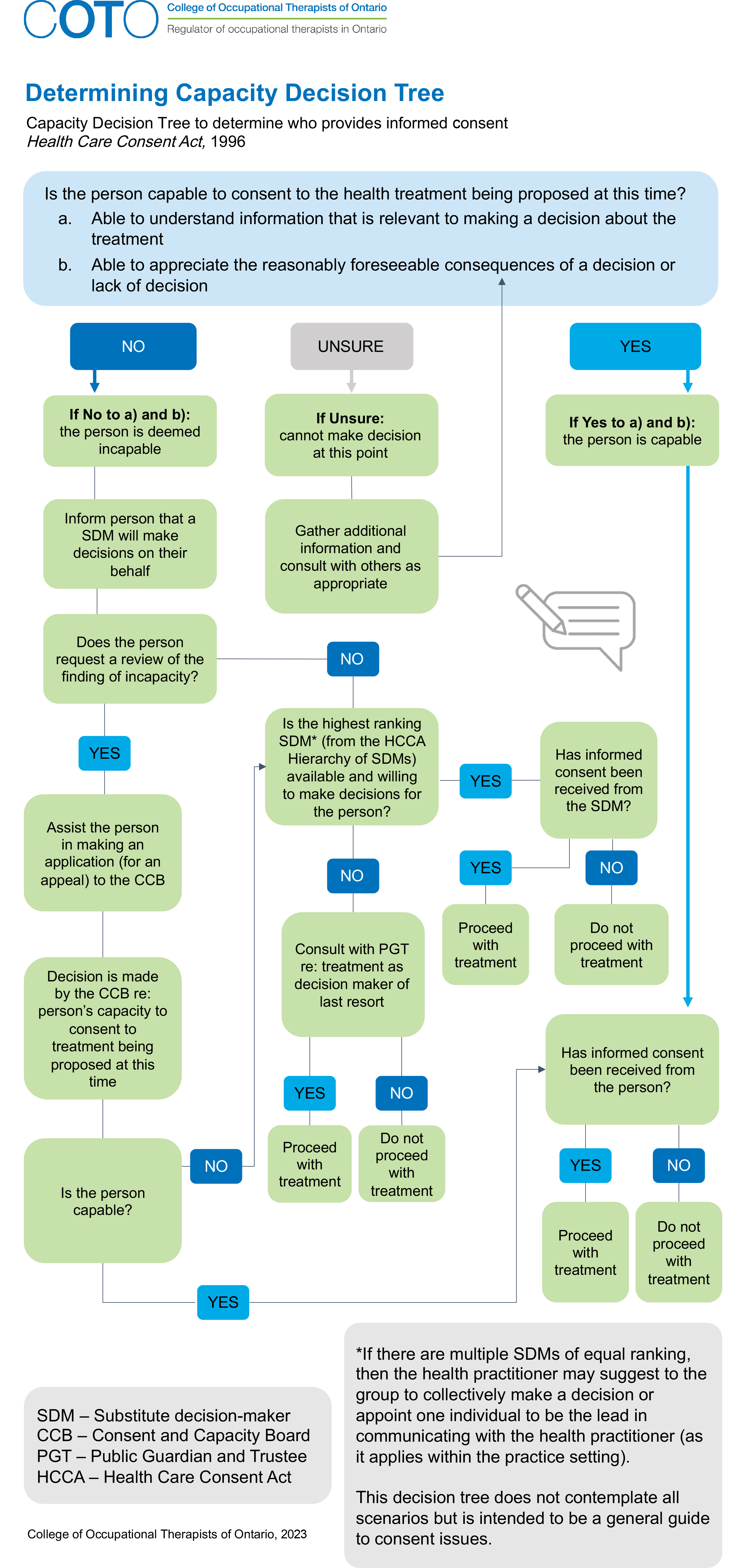Use the Capacity Decision Tree to help determine who provides informed consent under the Health Care Consent Act, 1996.
This decision tree does not contemplate all scenarios but is intended to be a general guide to consent issues.
Determining Capacity Decision Tree

Process Description
Step 1: Is the person capable to consent to the health treatment being proposed at this time?
A) Able to understand information that is relevant to making a decision about the treatment
B) Able to appreciate the reasonably foreseeable consequences of a decision or lack of decision
- If unsure, proceed to Step 2
- If no to A and B, the person is deemed incapable. Proceed to Step 3
- If yes to A and B, the person is deemed capable. Proceed to Step 8
Step 2: Gather additional information
If you are unsure, you cannot make a decision at this point.
- Gather additional information and consult with others as appropriate and go back to Step 1.
Step 3: Inform person
Inform the person that a substitute decision-maker (SDM) will make decisions on their behalf.
- Does the person request a review of the finding of incapacity?
- If yes, go to Step 4
- If no, go to Step 5
Step 4: Assist the person in making an application to appeal
Assist the person in making an application (for an appeal) to the Consent and Capacity Board (CCB)
A decision will be made by the CCB regarding a person’s capacity to consent to treatment being proposed at this time.
- Is the person capable?
- If no, proceed to Step 5
- If yes, proceed to Step 8
Step 5: Is the highest ranking SDM available to make decisions for the person?
Is the highest ranking substitute decision-maker* (from the Health Care Consent Act‘s Hierarchy of Substitute Decision-Makers) available and willing to make decisions for the person?
*If there are multiple substitute decision-makers (SDMs) of equal ranking, then the health practitioner may suggest to the group to collectively make a decision or appoint one individual to be the lead in communicating with the health practitioner (as it applies within the practice setting).
- If no, proceed to Step 6
- If yes, proceed to Step 7
Step 6: Consult with PGT
Consult with the public guardian and trustee (PGT) regarding treatment as a decision maker of last resort.
- If yes, proceed with the treatment.
- If no, do not proceed with the treatment.
Step 7: Receive informed consent from the SDM
Has informed consent been received from the substitute decision-maker (SDM)?
- If no, do not proceed with treatment.
- If yes, proceed with treatment.
Step 8: Receive informed consent from the person
Has informed consent been received from the person?
- If no, do not proceed with treatment.
- If yes, proceed with treatment.